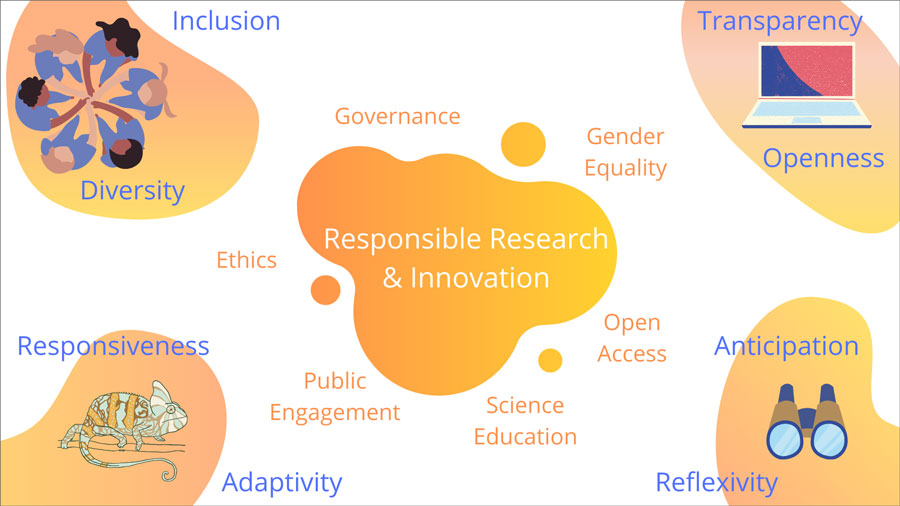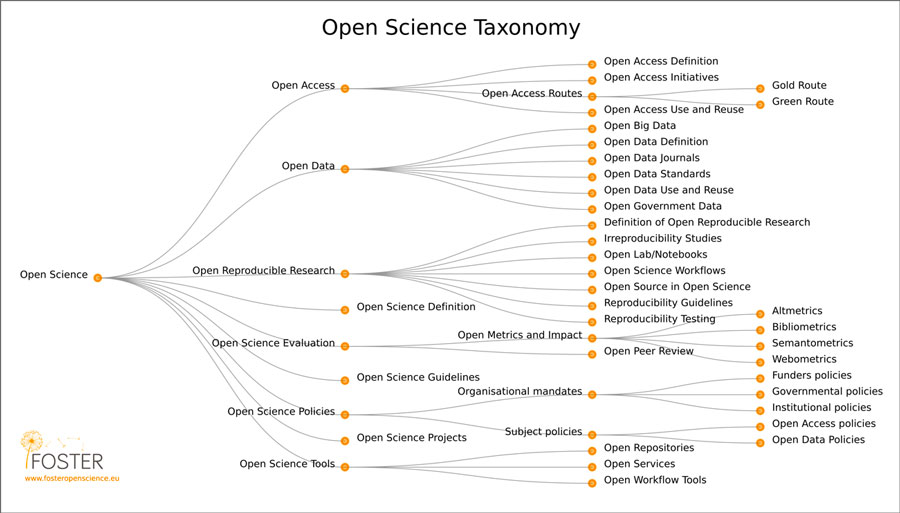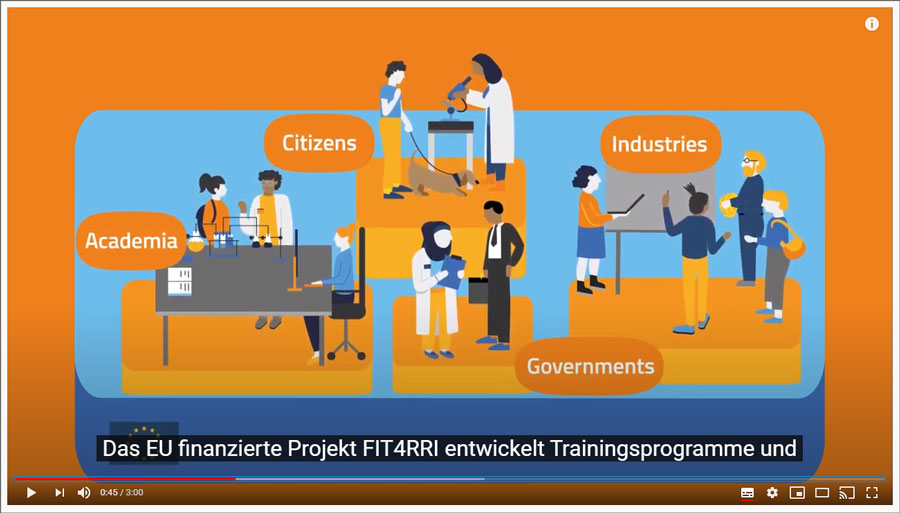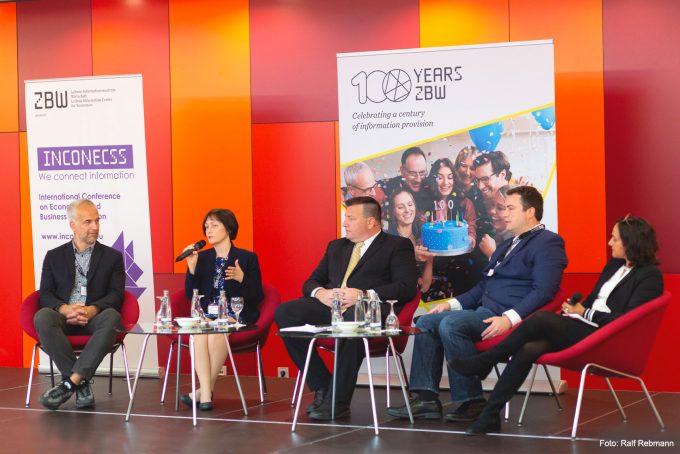
FIT4RRI: Shaping Open Research and Innovation Responsibly
The Open Science and the Responsible Research & Innovation (RRI) movements are closely linked: they share the fundamental values of openness, inclusion and democracy, as well as the common goal of making scientific results accessible at all levels to a society that is eager for knowledge. However, development is only moving forward at a halting pace. The EU-funded FIT4RRI project has investigated why this is the case. An interview with the project staff member Helene Brinken.
 we were talking with Helene Brinken
we were talking with Helene Brinken
The EU-funded „Fostering improved training tools for Responsible Research and Innovation“ (FIT4RRI) project ran from 2017 to 2020 and aimed to analyse why the use of RRI in research is still struggling with acceptance issues. What are the biggest obstacles? And how can a balanced degree of openness be achieved with respect to the interplay between a scientific incentive system in need of reform, increasingly precarious working conditions for researchers and administrative hurdles?
The Göttingen State and University Library was one of twelve international partner institutions involved in the project. This is where Helene Brinken worked. In an interview, she has told us the most important insights from the project – and revealed what the biggest hurdles were. She briefly delves into the “Starting the Process” document, which contains guidelines to support institutions in implementing RRI and Open Science. To close things out, she gives tips on how research institutions interested in Open Science can benefit from the FIT4RRI findings and what contribution libraries in particular can make.
Before we go any further, let us address the terms: Responsible Research & Innovation (RRI) is at the heart of your project. What exactly is RRI, and how is it related to Open Science?
The term „Responsible Research & Innovation“ has been used by the European Commission for about a decade. It defines an approach that enables us to meet societal challenges such as overcoming health crises, securing world food supplies and creating sustainable energy and transport systems.
RRI and Open Science share the core values of openness, inclusion and democracy. As we see it, Open Science represents the movement to make scientific results as well as the associated data and methods accessible to all levels of an inquisitive society.
RRI is more comprehensive in how it is defined and includes topics such as ethics, gender, public engagement and science education in addition to Open Access (see RRI Tools). Within this range, RRI primarily focuses on a “responsible process” and the associated involvement of all relevant actors from science, politics, industry and civil society. A research or innovation process that assumes responsibility in this sense is diverse and inclusive – not to mention open and transparent.
These points show the close connection to Open Science. An RRI process is also anticipatory and reflexive, for instance an attempt is made to foresee potential (negative) consequences and to constantly reflect on the effects of one’s own actions. Further important process characteristics as according to RRI include reactivity and adaptability: these make it possible to react to the knowledge that was gained in the process and potentially adapt one’s own actions.
What exactly was the FIT4RRI project about? What did you want to discover?
FIT4RRI aims to improve the learning opportunities with respect to Responsible Research & Innovation and Open Science. We have developed online courses that are provided on the FOSTER platform.
Learning opportunities such as workshops and webinars were carried out and guidelines for implementing RRI in research and research funding institutions were developed. In this way, FIT4RRI aims to contribute to an institutional anchoring of RRI and Open Science practices.
An important part of the FIT4RRI project included comprehensive literature analyses on RRI and Open Science. What are your most important findings?
The focus of the project was to investigate the reasons why RRI and Open Science are hesitantly implemented. The aim of it all was to derive recommendations for scientific and science-promoting institutions.

The first analysis focused on national and sectoral differences. While the national environment seems less important for implementing RRI and Open Science, the differences between sectors are indeed considerable: According to Van Lente et al. (“FIT4RRI D2.2 – WP2 Summary Report”) the nature of the research and the relationships with stakeholders are highly important. It especially depends on how established or new the sectors are.
In a second comprehensive literature analysis (FIT4RRI D1.1 – Report on the Literature Review), trends that currently critically influence our scientific system were identified. Interests, values and drivers that promote the implementation of RRI and Open Science were also identified – as were barriers that slow down or even prevent implementation.
Have your findings already been applied?
Four of the twelve FIT4RRI partner institutions have integrated RRI and Open Science practices into a local project or implemented them in institutional frameworks. For example, the first RRI-based research centre was realised at the Sapienza University in Rome.
At the independent non-profit institute Instituto de Soldadura e Qualidade (ISQ) in Portugal, an RRI model for the research activities of the Research and Development Department was also developed together with the institute’s scientists. These “experiments” served to supplement the findings from the literature analysis with experiences from practical implementation, and to create an awareness of RRI within the institute.
What are critical trends and the biggest barriers in the scientific system that slow down – or even prevent – the implementation of RRI and Open Science at the moment?
The investigations carried out by our colleagues D’Andrea et al. (Report on the Literature Review) revealed that our scientific system is strongly characterised by competition and pressure to publish. Other issues currently affecting scientists include increasing mobility, high task diversity, as well as a relatively low number of permanent contracts.
Moreover, the administrative workload of research and research funding institutions is becoming increasingly complex on account of the growing levels of interaction with external actors from politics, civil society, and industry. A balanced degree of openness is therefore present in the interplay between conceptual ambiguities and inconsistencies on the one hand, and declining confidence in science on the other.
In our work, we were able to identify different levels of barriers. There are obstacles that are related to the (non-)existing awareness of RRI and Open Science concepts. Other important influencing factors are whether these are perceived as relevant, effective and sustainable, or if they are actually implemented (see Critical trends shaping science). In order to overcome these obstacles and thus come closer to the practical implementation of RRI and Open Science in institutions, recommendations were developed in the context of FIT4RRI.
How do institutional frameworks need to change in order to better embed Open Science and RRI?
Institutions can create open, inclusive communication spaces to facilitate discussion on institutional development. Open Science can be actively promoted by institutions. They can reduce administrative hurdles, offer further training, provide incentives and act as role models. To promote cultural change, the commitment of scientists to responsible and Open Science must be acknowledged and recognised as a valuable contribution to the scientific community.
To what extent can research institutions interested in Open Science use your project results?
In the project, guidelines were developed to support institutions in implementing RRI and Open Science. However, these recommendations do not claim to offer ready-made solutions to implementation challenges. Their main objective is to propose a way to activate institutional change processes towards RRI and Open Science in any given organisation in a way that is as feasible, sustainable, and useful as possible.
The “Starting the process” document that the FIT4RRI project produced includes guidelines and recommendations for:
- Interpretations on how one’s own institution is affected by current trends and how it can deal with them.
- Decisions that need to be taken to initiate control processes.
- Actions to implement the plan of a structural change towards RRI and Open Science.
Altogether, there are 30 recommendations. Online, you can find a short summary of the recommendations from the Guidelines on Governance Settings for Responsible and Open Science as well as the entire document, including a comprehensive collection of examples and further resources with background texts and additional literature references: FIT4RRI Guidelines on Governance Settings for RRI and OSC
How can libraries in particular drive this cultural change even more strongly in practice?
Libraries could also play an active role in networking among stakeholders, for example by organising regular meetings on topics from RRI and Open Science. In addition, as contractual partners of publishers, libraries can position themselves in negotiations as advocates of Open Access. And last but not least, libraries themselves can also make their institutional processes “more responsible” as according to RRI – for instance diverse and inclusive, anticipatory and reflective, open and transparent, and responsive and adaptable.
This might also interest you
- FOSTER Plus: How libraries can foster the change to Open Science
- Open Science guides: How universities promote putting it into practice
- Open Science in Research Projects: Library supports from Grant Proposal to Final Report
- European Open Science Cloud: How libraries can spring into action
The FIT4RRI final summit will happen in the digital realm from 29. September to 1. October 2020. You can register starting 1. September 2020. The Agenda, technical and organisational details will be published. Find the newest information in the FIT4RRI newsletter.
Interview with project staff member Helene Brinken.
Helene Brinken was responsible for communications and public relations for the FIT4RRI project at the Göttingen State and University Library until the end of April 2020. She is currently working in the open-access.network project (German) at the TIB – Leibniz Information Centre for Science and Technology University Library in Hannover, where she is investigating the implementation and perception of Open Access and creating learning materials.
View Comments

LIBER 2020 Online: Building Trust with Research Libraries
Many of the topics of the LIBER 2020 Online conference can be classified under the...





